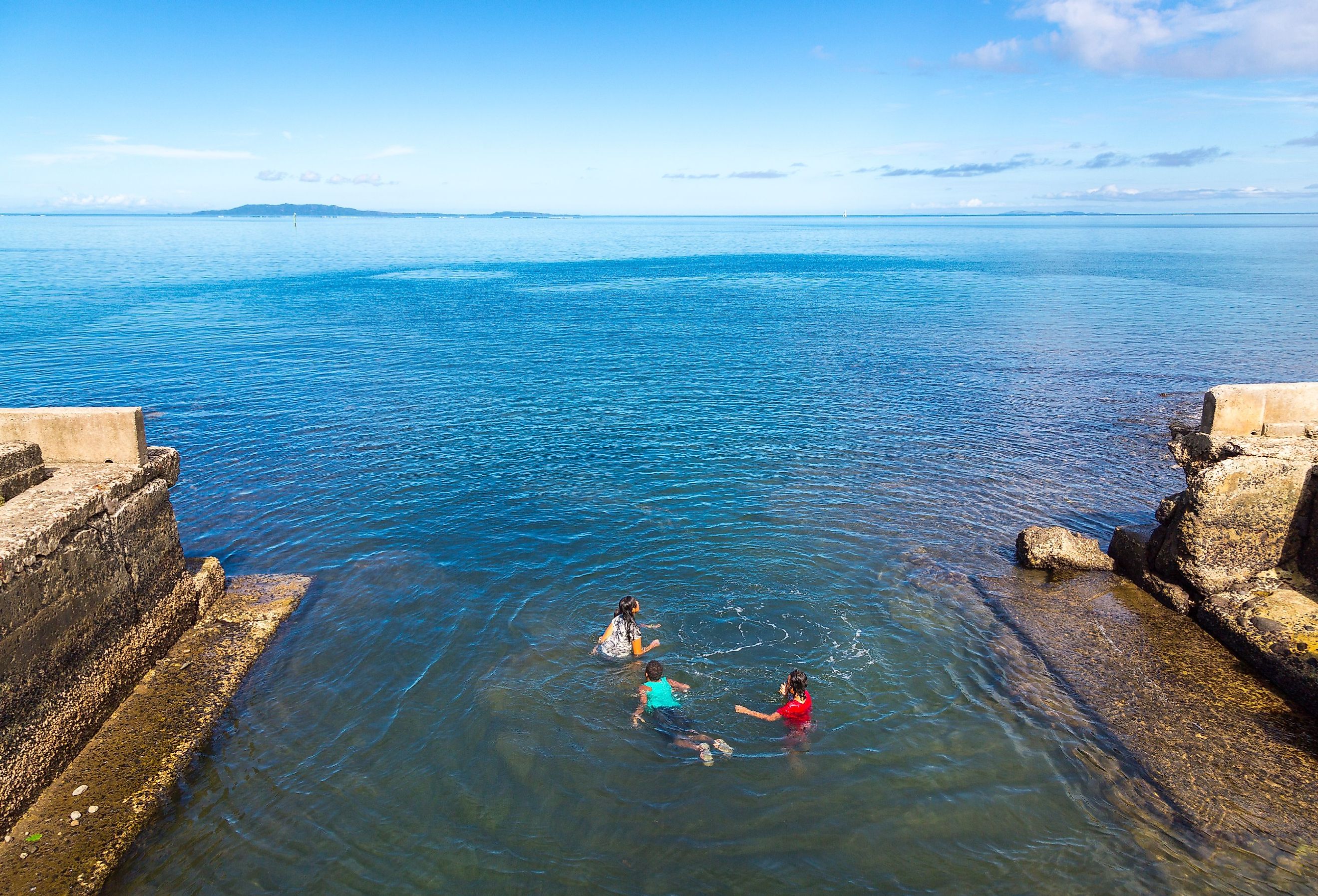
Koro Sea
In the Pacific Ocean, and located off the coast of the Fiji islands, the Koro Sea is a beautiful body of water, filled with coral reefs and surrounded by islands. The sea gets its name from Koro Island, the island located in the middle of the Koro Sea. It spans approximately 22,000 square miles and is a popular destination for diving.
Geography
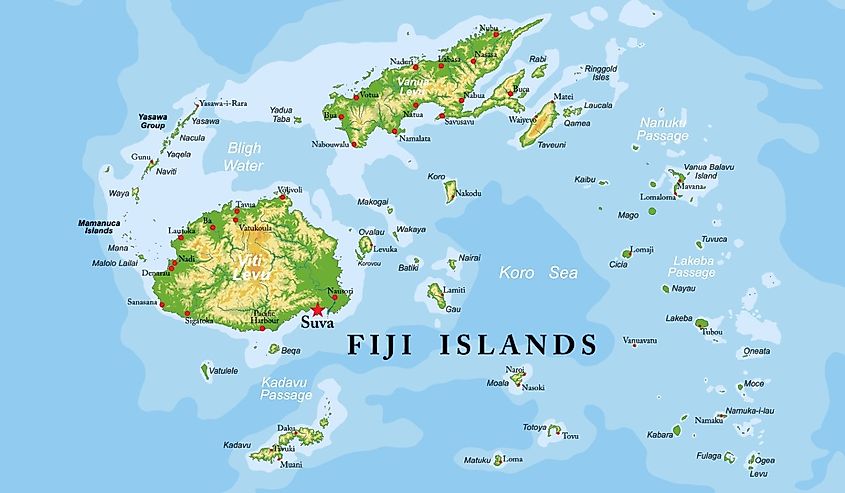
The Koro Sea is a sea in the South Pacific Ocean, located near Viti Levu island, the largest island in Fiji. Surrounded by the Fiji Archipelago islands, the Koro Sea is to the west of the Lau Islands. The Sea is more than 9,600 feet deep and is a submarine depression in the ocean's floor. The bottom of the Koro Sea's floor has basaltic rock, a dark-colored, fine-grained, igneous rock commonly found in ocean basins. Besides basaltic rock, the sea lanes linking the Koro Sea to the islands have many coral reefs. This makes navigating the Koro Sea difficult. There are only a few ways to approach the center of the groups of islands. While there are a few islands in and surrounding the sea, the Koro Sea gets its name from Koro Island.
Koro Island
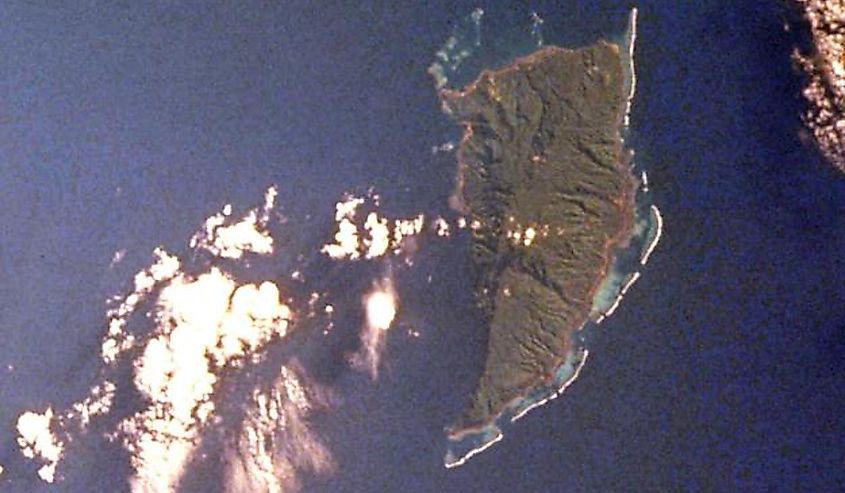
Koro Island is part of the Lomaiviti Archipelago of Fiji, which has seven small islands, Koro Island being one of them. There are 14 villages on the coast of Koro island. In its entirety, Koro Island is around 40 square miles in size. There are around 3,000 people who live on the island. Most of the population on Koro Island are in the agriculture or forestry industry. Some of the important crops grown and harvested on Koro Island are Kava root and copra (dried coconut). The volcanic island has a center covered in dense forest. There is also a ridge in the middle of the island that goes from north to South and reaches 1,840 feet at its highest point. The outskirts of the island, near the coast, have many coconut trees.
Diving
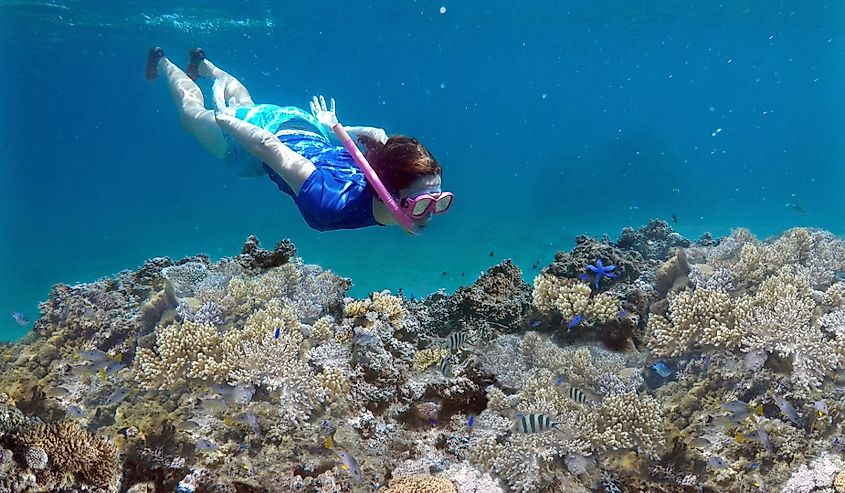
Since the Koro Sea is near many islands and filled with coral reefs, it is a popular destination for diving. The Koro Sea diving environment has many healthy reefs and is good for divers looking for a place off the beaten track. The strong currents in the water mean some areas aren't suitable for beginners.
The Koro Sea, along with the Bligh Waters, is Fiji's number one diving destination. The water in the Koro Sea is nutrient-rich because of the large amount of water moving through the channel. This attracts a lot of fish. Some of the fish people see diving in the Koro include sharks, manta rays, and big pelagics. Some of the most popular diving sights in the Koro Sea include Namena Island and Shark Fin Point.
Namena Island And Shark Fin Point
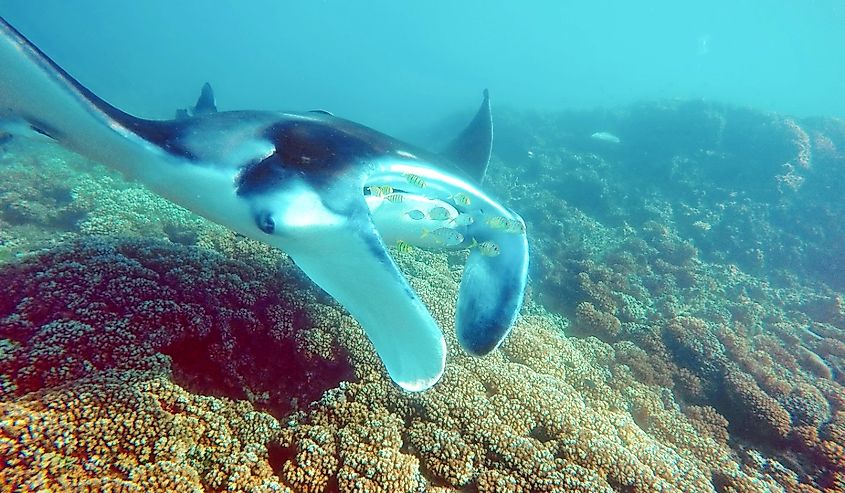
Namena Island has numerous Manta Rays in the water, swimming around a pinnacle that allows them to show off their swimming moves. There are also sponges and bright corals on the reef and pinnacle, which are home to many beautiful sea critters. Some divers report seeing colorful fish, such as damselfish, performing their courtship rituals. Other common fish to see include blue streak fusiliers, anemonefish, wrasse, and Nudibranchs.
Shark Fin Point is also full of a variety of fish and, true to its name, is also home to sharks, including the white tip reef sharks and grey reef sharks. Other fish seen in Shark Fin Point include the grinning barracuda and eagle rays. Whale sharks are also spotted in Shark Fin Point, but their occurrence is rare.
Climate
The Koro Sea is in the tropics and has a tropical climate. Although there are temperature differences throughout the year, they are relatively minor. Winter spans the months from June to August, and summer spans the months from January to March. In the winter, minimum temperatures are around 68 degrees Fahrenheit. By contrast, in the summer, minimum temperatures are around 73 degrees Fahrenheit. The average water temperature is around 81 degrees Fahrenheit throughout the year. While summertime is the rainy season for Koro, there is no real dry season for the region. In winter time the area can experience rain as well. This is because Koro island has a lot of forest and plants.
Whether you are looking to dive into the Koro Sea or want to experience the sea from Koro Island, the area is worth visiting. From coral reefs and a variety of fish in the Koro Sea to the lush green forests and coconut trees on Koro island, there is beautiful scenery that everyone can enjoy.











